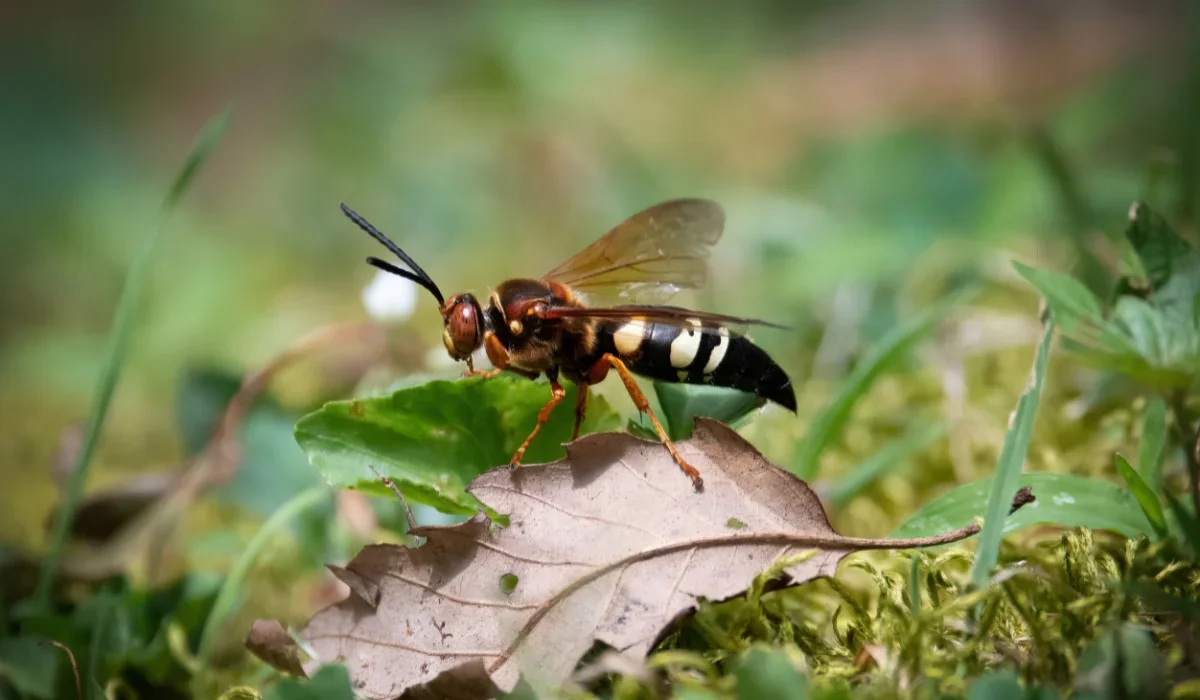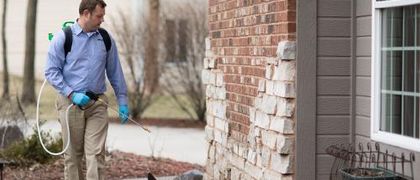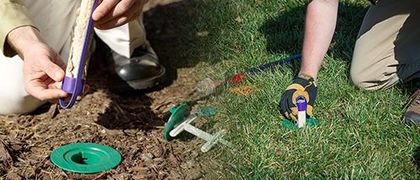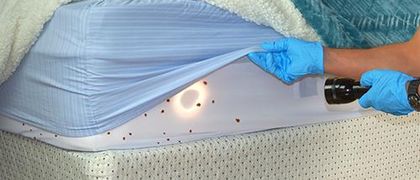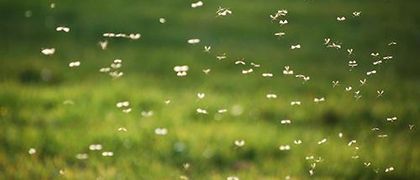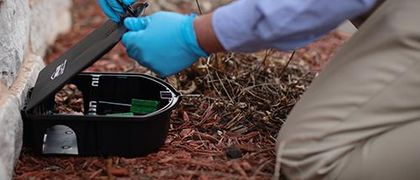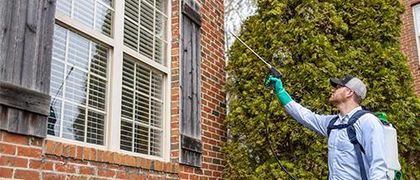Common Types of Wasps to Look Out for in Missouri
In Missouri, wasps are a common sight during the warmer months—especially as late summer rolls around. Some are beneficial pollinators, while others are aggressive stinging insects that can make being outdoors less enjoyable.
Whether you’re in St. Louis, Kansas City, or rural areas of the state, knowing the types of wasps you're likely to encounter can help you stay safe and protect your home.
Let’s break down what you might come across in Missouri, where they build nests, and when to consider professional pest control.
Key Takeaways
- Missouri has several types of wasps that nest in yards, trees, porches, eaves, attics, and wall spaces.
- Paper wasps, yellow jackets, bald-faced hornets, cicada killers, mud daubers, and European hornets are all commonly found.
- Some wasps sting multiple times and become aggressive in late summer when nests grow and food is limited.
- Wasp nests near people or pets should be removed by pest control professionals with tools to reach up to 25 feet.
Paper Wasps
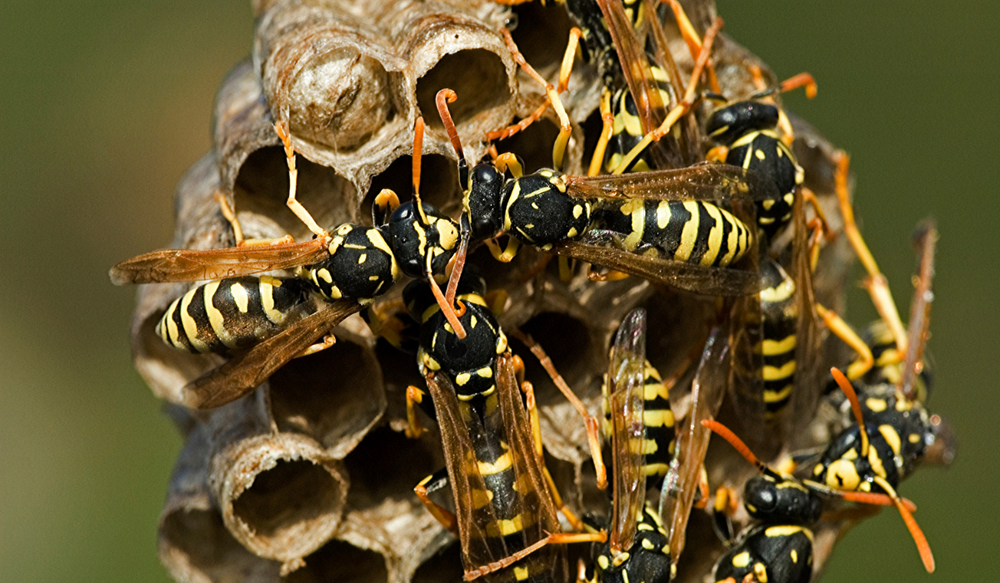
Paper wasps are some of the most recognizable social wasps in Missouri. They get their name from the papery appearance of their nests, which are made from wood fibers mixed with saliva. Unlike solitary wasps, they live in small colonies and are somewhat territorial.
While they feed on pests like caterpillars to nourish their larvae, they’ll use their stingers if they feel their nest is threatened.
You’ll see them more frequently in late summer as they prepare for new queens to overwinter.
Eastern Yellow Jackets
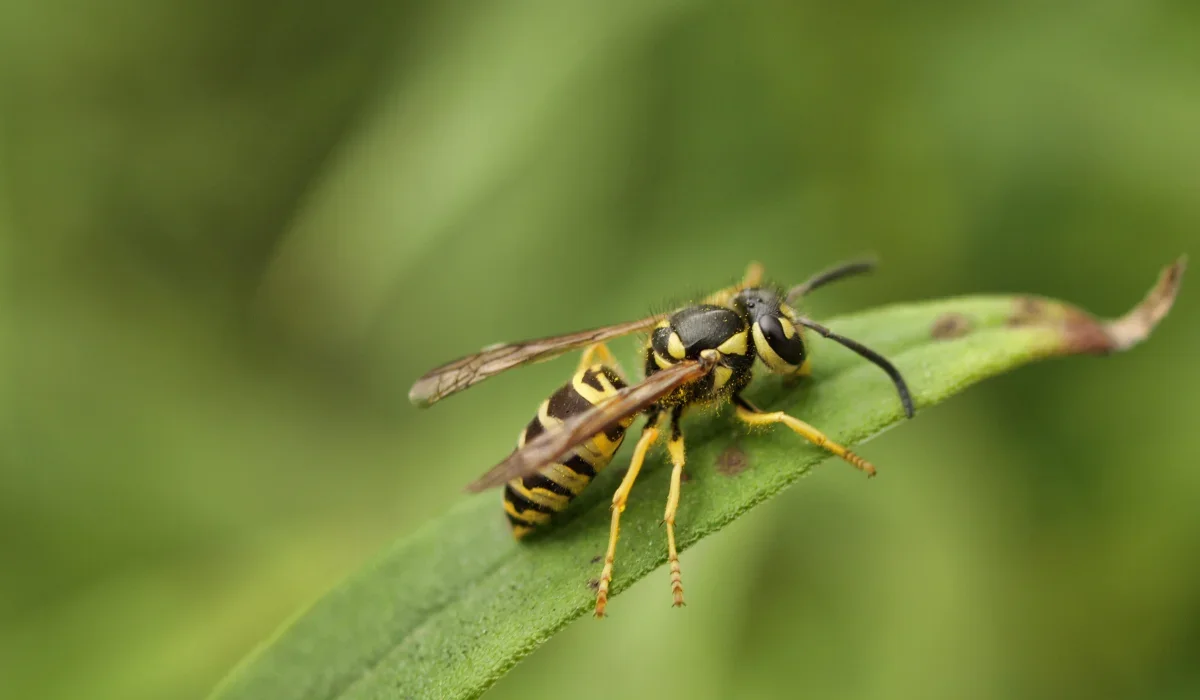
If you’ve ever been to a picnic and had to fend off wasps going after your food, it was likely an Eastern yellowjacket, one of the most common yellow jackets in Missouri. These stinging insects are known for their aggressive behavior and love for sugary food sources.
They build ground nests, but you can also find them in attics, hollow trees, or wall voids. Their bright yellow markings make them easy to identify. Since they don’t lose their stingers, they can sting multiple times.
Their population spikes in late summer, so be extra cautious during that time.
Bald-Faced Hornets
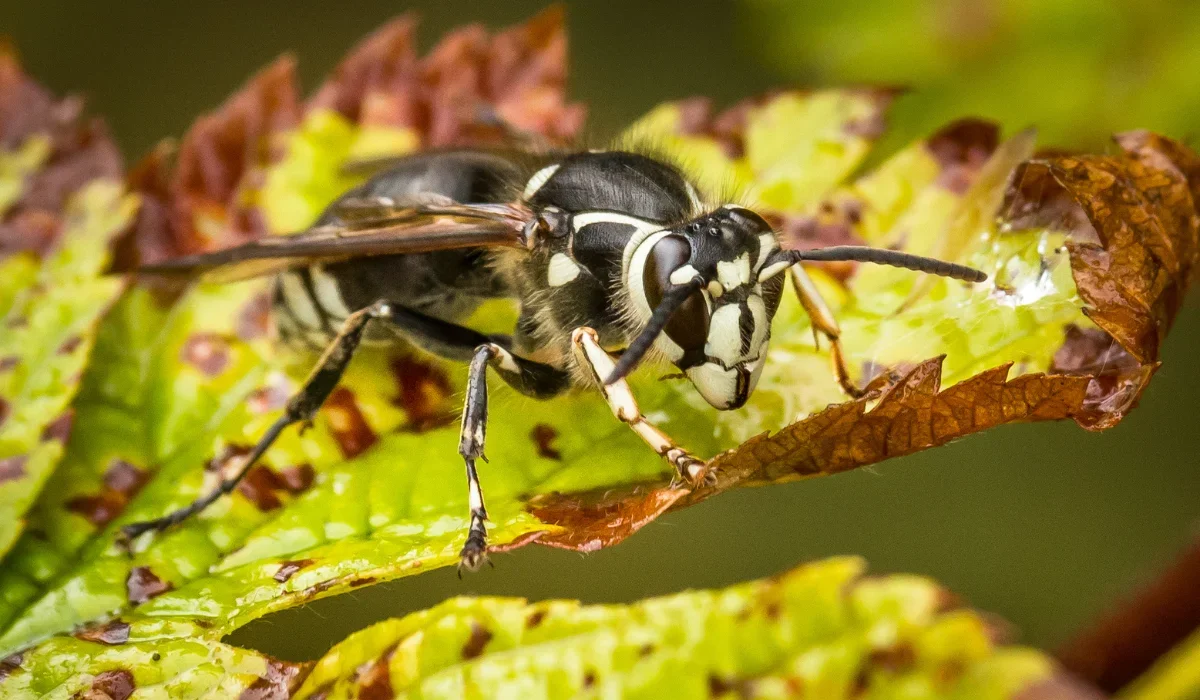
The bald-faced hornet is actually a type of yellowjacket, but with its striking black-and-white coloring and larger size, it stands out. These hornets build massive papery nests that hang from trees, utility poles, or even on the sides of buildings.
As with other social wasps, they become more aggressive when defending their wasp nests. Their wasp stings are painful and can trigger an allergic reaction, though fewer than 10 percent of stings cause serious issues.
So, it's best to avoid the nest and call for wasp control if it’s in a high-accessibility area.
Cicada Killer Wasps
These large digger wasps might look intimidating, but cicada killer wasps are not a threat unless provoked. They’re solitary wasps that prefer to nest in ground nests along sidewalks, flowerbeds, or sandy areas.
Their main job? Paralyze cicadas and drag them into a nest cell for their young. Even though they rarely sting humans, the sheer number of burrows they can create in your yard might prompt you to seek help.
Mud Daubers
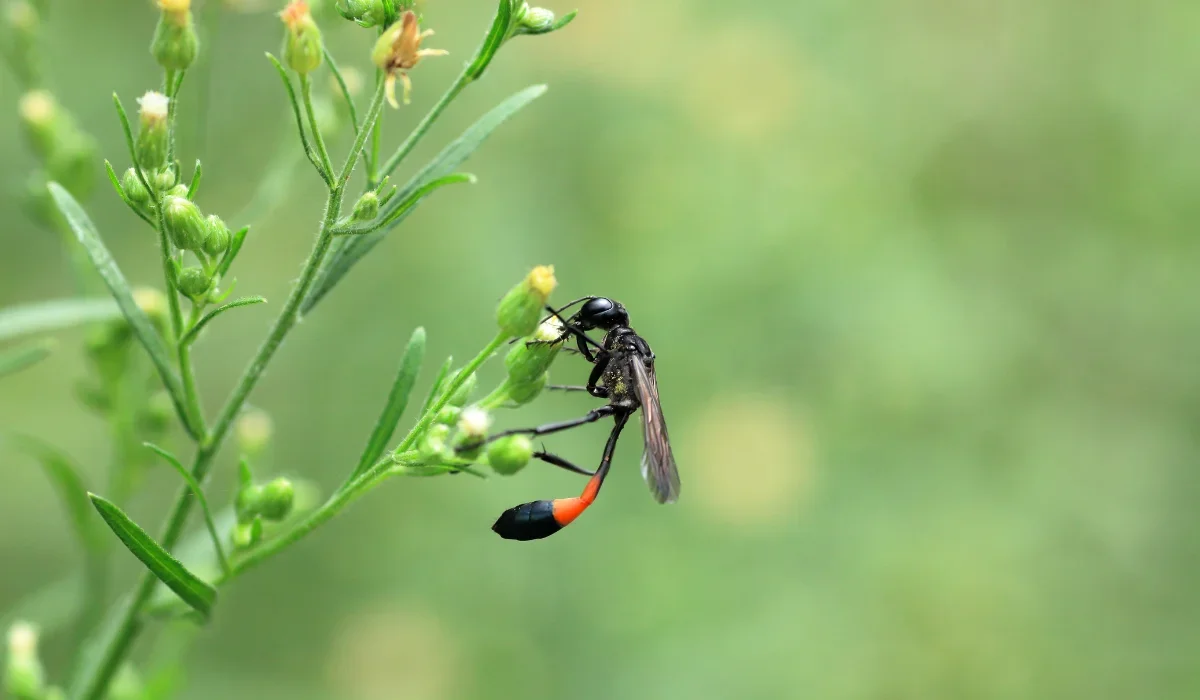
Unlike hornets or yellow jackets, mud daubers are solitary wasps that construct unique mud tube nests. You’ll often find them under eaves, in attics, or inside garages. Their nests are built with mud, not paper, to house spider prey for their larvae.
They are not aggressive and rarely sting, but abandoned nests can attract other wasp family members looking to reuse the space. While sweat bees and bumble bees may share similar habitats, only they leave behind the signature mud tubes.
European Hornets
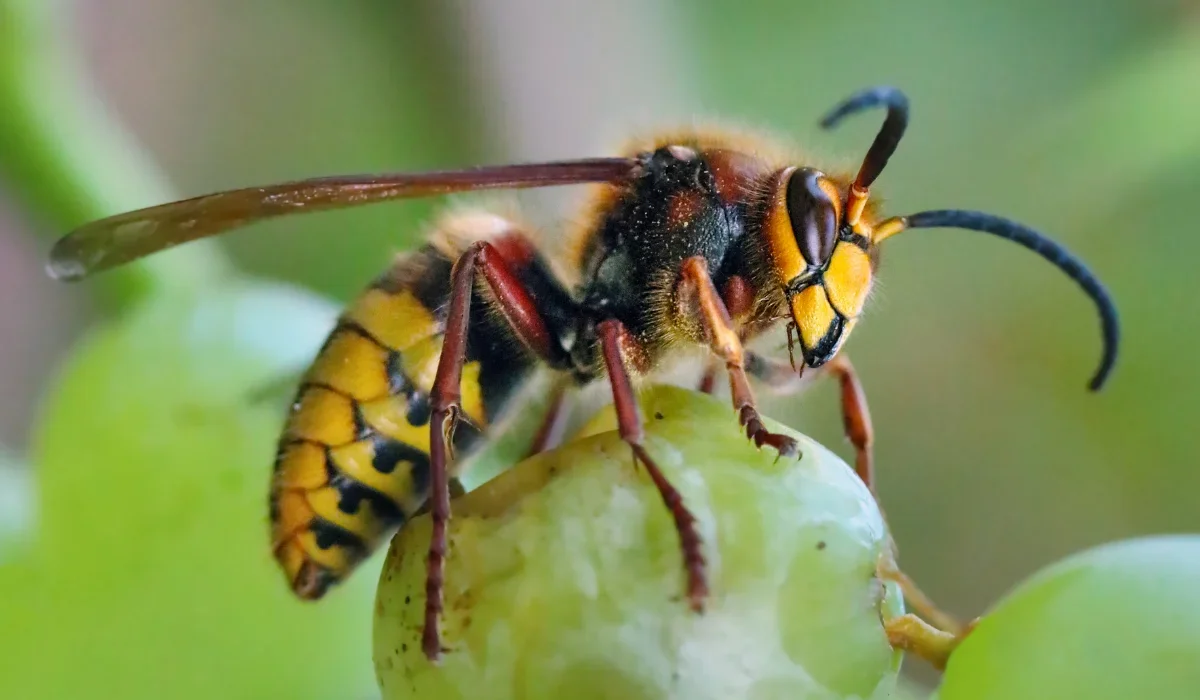
The European hornet is one of the few true hornets in North America that is active at night. These social wasps are larger than most wasps and have yellow and brown stripes. They typically nest in hollow trees, wall cavities, or barns, which makes them harder to locate.
They can become aggressive when their nest is disturbed and can deliver multiple wasp stings. They are less likely to show up at picnics, but if you notice one buzzing around your porch light at night, it could be a sign they’ve made a nearby structure their home.
When to Contact a Pest Control Professional
If you see wasp activity around your home—especially near high-traffic areas like porches, eaves, or attics—it’s worth reaching out for wasp control.
At Miller Pest & Termite, we safely remove wasp nests, including nests located up to 25 feet high. Our team is trained to identify and handle every situation safely and effectively. We can help you determine if the insects around your home are bees or members of the wasp family.
Contact us now for professional wasp control in St. Louis, Kansas City, Des Moines, and the surrounding areas.
Get Help Now!

